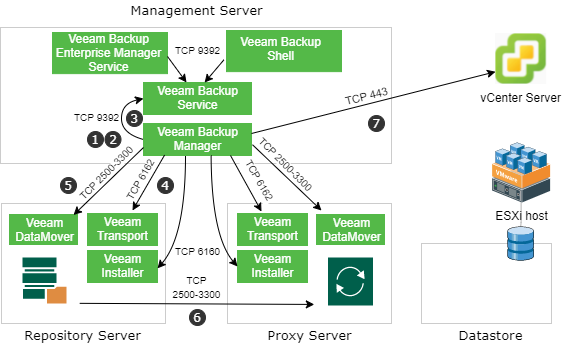

Because of this, the bandwidth required will be slightly lower than what you see on the storage. When it comes to distribute the workload in VMware vSphere environments, first Backup & Replication checks if data processing can be assigned to a backup proxy. Veeam will apply compression and filter out unnecessary blocks (i.e., only transfer the latest version of a block that was changed multiple times within the RPO window). Bandwidth estimations can be done by monitoring the storage write traffic. While classic backups happen every eight, 12 or 24 hours, and only use network bandwidth a few times per day, CDP has a constant stream of data to transfer. As always, you need to allocate hardware resources for the data transfer and for storing changed data. When planning CDP, there are a few things you need to consider. CDP can be used within your own data center or to a Veeam Cloud & Service Provider (VCSP). 745 views Userlevel 7 +12 vNote42 Veeam Legend, Veeam Vanguard 1246 comments Because backup of a vSphere VM almost always involves taking a vSphere snapshot, this VMware blog post will be interesting for every backup administrator. CDP is based on the vSphere APIs for I/O Filtering (VAIO) and can be used very similarly to classic Veeam replication (which is snapshot-based).

The feature is called Continuous Data Protection (CDP), which allows you to reduce RPO and RTO times for disaster recovery. With Veeam Backup & Replication, you can replicate VMware VMs every few seconds without vSphere snapshots. Integrate Veeam Continuous Data Protection into your disaster recovery concept


 0 kommentar(er)
0 kommentar(er)
